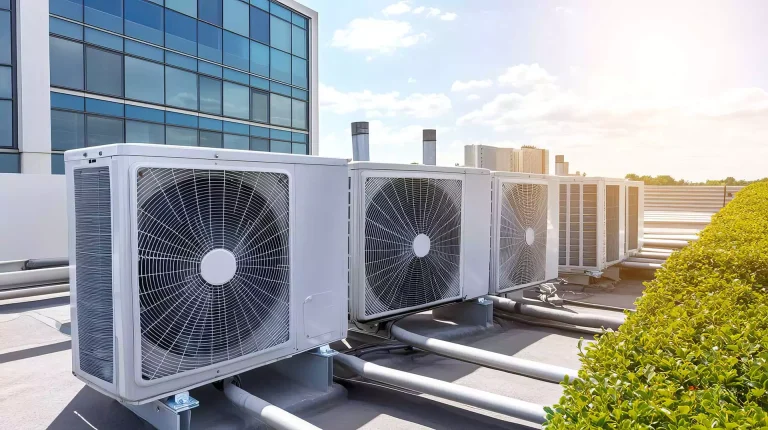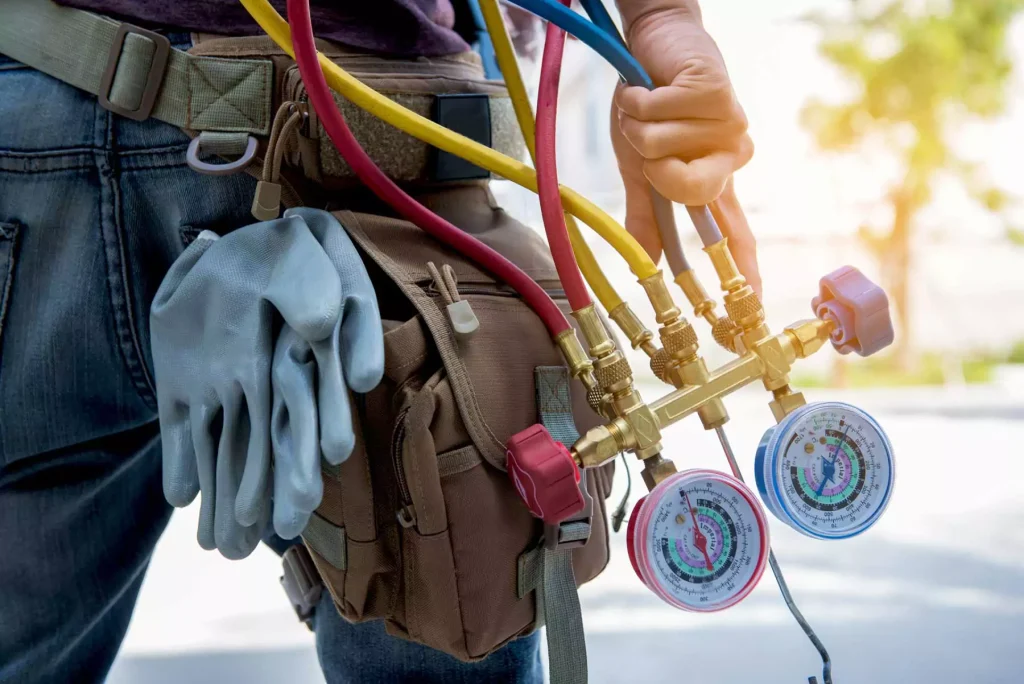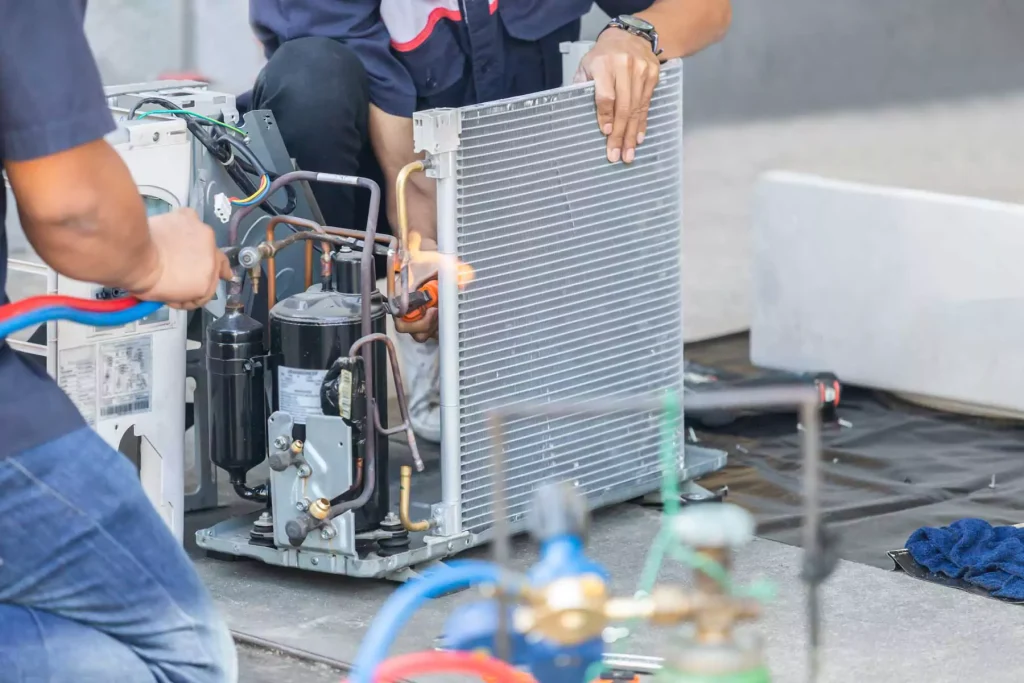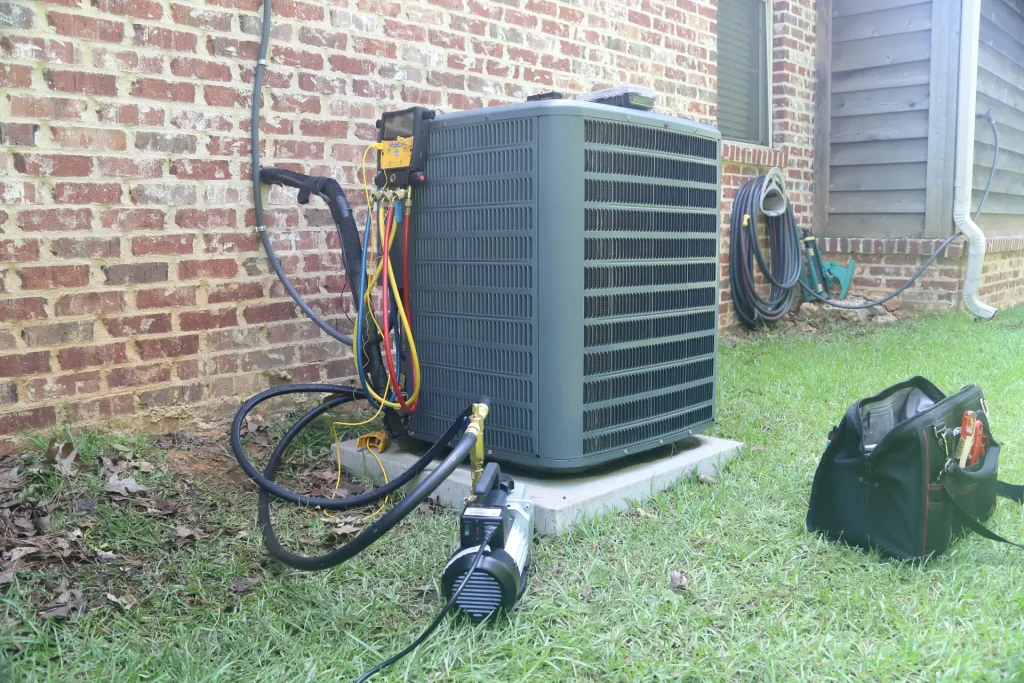Commercial HVAC Systems: The Backbone of Business Operations
Commercial HVAC systems represent a critical investment for any business facility, requiring careful consideration of numerous factors beyond those found in residential applications. At Kane Heating and Air Conditioning, we understand that commercial spaces demand robust climate control solutions that balance energy efficiency with reliable performance across thousands of square feet. Commercial systems typically operate 40-60 hours per week compared to residential units that run approximately 20-30 hours, placing significantly higher demands on equipment durability and maintenance requirements.
The complexity of commercial HVAC extends far beyond simple temperature control. Modern commercial systems must manage humidity levels, ensure proper ventilation rates to meet ASHRAE standards, and maintain different climate zones within a single building. These systems often incorporate sophisticated building automation systems that monitor and adjust performance in real-time, optimizing energy consumption while maintaining occupant comfort. We specialize in designing and implementing these comprehensive solutions that address the unique challenges each commercial space presents.
Understanding Commercial HVAC Equipment Categories
Commercial HVAC equipment falls into several distinct categories, each suited to specific building types and operational requirements. Packaged rooftop units remain the most common choice for retail spaces and smaller office buildings, offering heating and cooling capacities ranging from 3 to 50 tons. These self-contained systems simplify installation and maintenance while maximizing interior space utilization. Split systems, featuring separate indoor and outdoor components, provide flexibility for buildings with limited roof access or specific architectural constraints.
For larger facilities, chilled water systems offer superior efficiency and zone control capabilities. These systems use water as a heat transfer medium, circulating it through air handling units strategically positioned throughout the building. Variable refrigerant flow systems have gained popularity in recent years, particularly in multi-tenant buildings where individual zone control and energy metering are priorities. Each system type requires specific expertise for proper sizing, installation, and ongoing maintenance—knowledge we’ve developed through years of hands-on experience across Harker Heights, Nolanville, Killeen, Belton, Copperas Cove, and Temple, TX.
Energy Efficiency and Operating Cost Considerations
Commercial HVAC systems account for approximately 40% of total energy consumption in typical office buildings, making efficiency improvements a primary concern for property owners and facility managers. Modern high-efficiency equipment can reduce energy costs by 20-30% compared to systems installed just ten years ago. Variable speed drives, economizer controls, and demand-controlled ventilation represent just a few technologies that significantly impact operational expenses.
The integration of smart controls and IoT sensors enables predictive maintenance strategies that prevent costly breakdowns while optimizing system performance. These advanced monitoring systems track key performance indicators like compressor runtime, refrigerant pressures, and airflow rates, alerting facility managers to potential issues before they escalate into major failures. We recognize that every commercial client needs multiple options to find what benefits them most, whether prioritizing initial investment costs or long-term operational savings.
Indoor Air Quality and Ventilation Requirements
Commercial buildings must maintain specific ventilation rates to ensure occupant health and comply with local building codes. The pandemic has heightened awareness of indoor air quality, driving demand for enhanced filtration systems and ultraviolet germicidal irradiation technology. MERV-13 filters have become the new standard for many commercial applications, capturing particles as small as 0.3 microns with 85% efficiency.
Proper ventilation design involves calculating occupancy loads, understanding space utilization patterns, and implementing demand-controlled ventilation strategies. Carbon dioxide sensors monitor occupancy levels in real-time, adjusting fresh air intake to maintain optimal air quality while minimizing energy waste. These sophisticated approaches to air quality management demonstrate how Kane Heating and Air Conditioning is more than just an HVAC company—it’s a testament to dedication, community spirit, and a commitment to providing exceptional comfort solutions throughout Temple, Belton, Harker Heights, TX, and the surrounding areas.
Maintenance Programs and Service Requirements
Commercial HVAC systems require comprehensive maintenance programs to ensure reliable operation and maximize equipment lifespan. Regular maintenance activities include:
- Quarterly filter replacements to maintain proper airflow and system efficiency
- Annual coil cleaning to prevent efficiency losses from dirt accumulation
- Refrigerant level checks to identify and address potential leaks
- Belt tension adjustments to prevent premature wear and unexpected failures
- Control system calibration to ensure accurate temperature and humidity control
Preventive maintenance programs typically reduce equipment breakdowns by 70-75% while extending system life by 5-10 years. We offer high-quality service at affordable prices, working with each client to develop customized maintenance schedules aligned with their operational requirements and budget constraints. While primarily focused on residential heating and air conditioning service, installation and maintenance, our commercial expertise continues growing as we expand our capabilities, recently adding water heater services to better serve our diverse client base.



